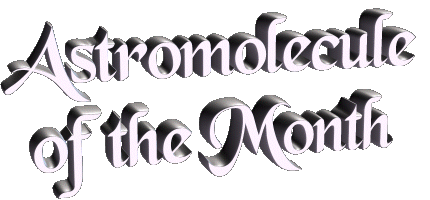|
Ammonium cyanide, NH4CN, was detected in the coma of comet
67P/Churyumov-Gerasimenko by
Altwegg and coworkers, as reported in 2020.
It was a logical follow-up to the detection
of the ammonium cation (NH+
4) in the same comet in 2016.
The identification was made via mass spectroscopy using the
Rosetta Spectrometer for Ion and Neutral Analysis (ROSINA) on
the Rosetta probe by tracking
correlations of NH+
4 with other species.
A number of other
ammonium salts are inferred to be present
on comet 67P: the presence of ammonium cyanate (NH4OCN), chloride (NH4Cl),
formate (NH4HCOO), and acetate (NH4CH3COO) were also noted by
Altwegg et al., while ammonium
hydrosulfide (NH4SH) and fluoride (NH4F) were reported in 2022 in a subsequent
publication.
There is also evidence that
ammonium carbonate or ammonium chloride salt is present on the dwarf planet
Ceres.
|
|
|
|
Ammonium cyanide is unstable salt.
Salts are ionic solids that are a mixture
of cations and anions, bound together by Coulombic
forces. There are at least two ways to transform pairs of neutral atoms or molecules into ion pairs: via
electron transfer and proton transfer. Salts formed from
alkali metals and
halogens involve the transfer of an electron from the
metal to halogen. This occurs even when the simplest salt monomer forms, such as in the known diatomic
astromolecule KCl. Ammonium cyanide is an example of a proton transfer
salt, where ammonia extracts H+ from HCN to form
NH+
4, leaving CN–.
In contrast to KCl, an encounter between single NH3 and HCN molecules in the gas phase does
not yield NH4CN (NH+
4)(CN–).
It is plausible that interstellar and cometary salts form on ice surfaces, where water
enhances the stability of ions with respect to neutrals. As shown in the structure, the simple NH4CN
monomer is computationally stable in a small cluster with even a limited amount of water present.
|



